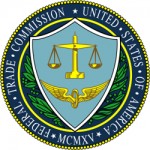 In this first part, we look at how the Dodd-Frank Act structured interactions between the Federal Trade Commission and the Consumer Financial Protection Bureau.
In this first part, we look at how the Dodd-Frank Act structured interactions between the Federal Trade Commission and the Consumer Financial Protection Bureau.
The FTC has consumer protection jurisdiction over just about every business in the country, but for a few significant exceptions—financial institutions regulated by federal banking regulators, insurance companies and telecommunications companies among them.
So if the FTC was not in charge of consumer protection for banks and credit unions, who was? The federal banking regulators themselves were responsible. See the FTC Act,
15 U.S.C. § 57a(f).
The FTC still doesn’t have consumer protection jurisdiction over banks and credit unions, but the Dodd-Frank Act created the CFPB and transferred consumer protection jurisdiction for banks and credit unions to them instead. Dodd-Frank not only transferred that jurisdiction, but also gave the CFPB many new tools and extensive dedicated resources for ensuring the protection of consumers who are customers of banks and credit unions. This means that the banking industry now has its very own federal consumer protection agency and that the other federal banking regulators will be focused on other issues.
But Dodd-Frank also gave the CFPB consumer protection jurisdiction over any company, not just banks and credit unions, that is involved in offering or providing a consumer financial product or service as well as companies who are service providers to those that offer or provide consumer financial products or services. Public Law 111-517, Title X, §1002(6).
What does this mean for the FTC? With respect to specific federal consumer financial laws such as the Truth In Lending Act, the FTC no longer has enforcement authority. But the FTC retains jurisdiction over these non-bank entities when it comes to unfair or deceptive acts or practices and has concurrent jurisdiction with the CFPB on the Fair Credit Reporting Act.
As such, the CFPB and the FTC are instructed to coordinate on their concurrent jurisdiction. As Title X, Section 1024(c)(3)(A) states:
The Bureau and the Federal Trade Commission shall negotiate an agreement for coordinating with respect to enforcement actions by each agency regarding the offering or provision of consumer financial products or services by a covered person … or service providers thereto. The agreement shall include procedures for notice to the other agency, where feasible prior to initiating a civil action to enforce any Federal law regarding the offering or provision of consumer financial products or services.”
The CFPB and the FTC are also restricted from suing a company being sued by either agency, although they are allowed to formally intervene in the litigation.
That is not the only agreement the CFPB and FTC need to negotiate with respect to their concurrent jurisdiction. The CFPB is allowed to enforce FTC rules that rely upon the FTC’s authority to regulate unfair or deceptive acts or practices, and vice versa. With respect to new rulemakings using that authority, the two agencies are also instructed to “avoid duplication of or conflict between rules” by negotiating an agreement with respect to each rulemaking and consulting with the other agency prior to proposing a rule and during the comment period. Title X, Section 1061(5)(D).
In the next part we will discuss early indications as to how the agencies may actually interact with each other.